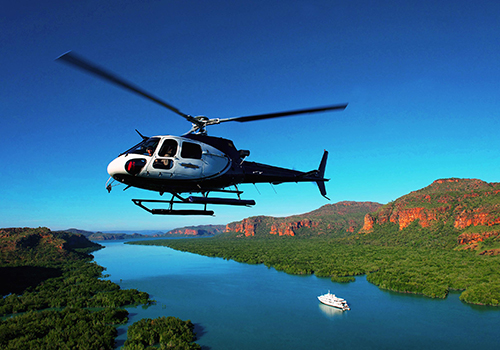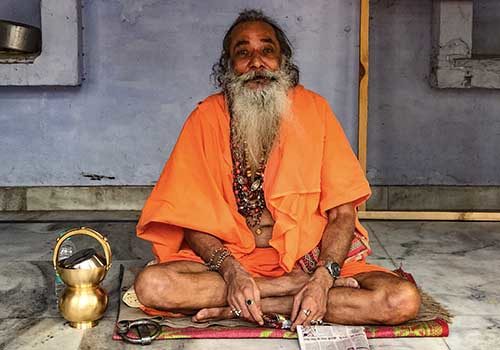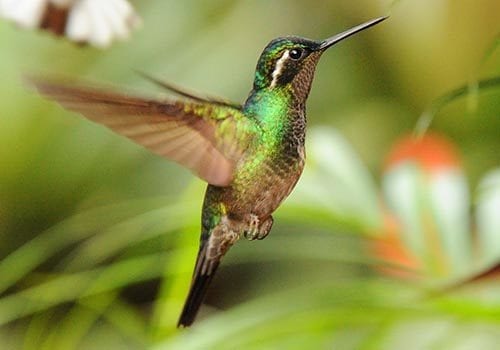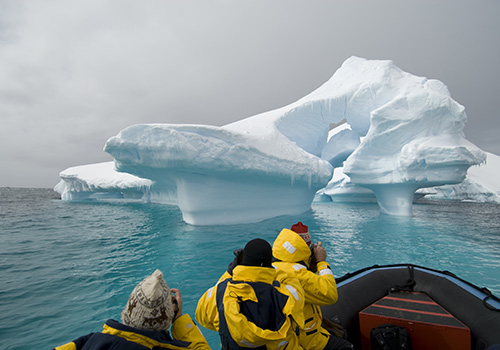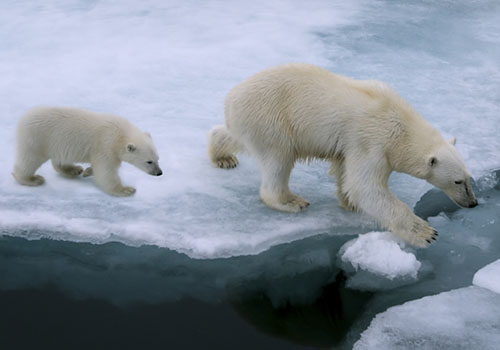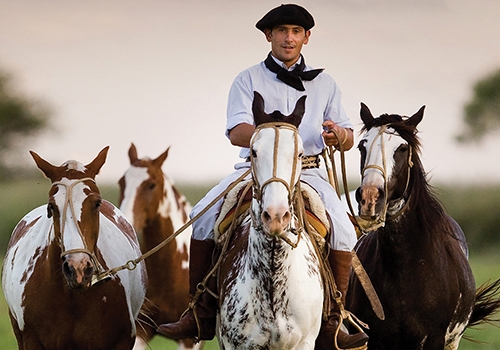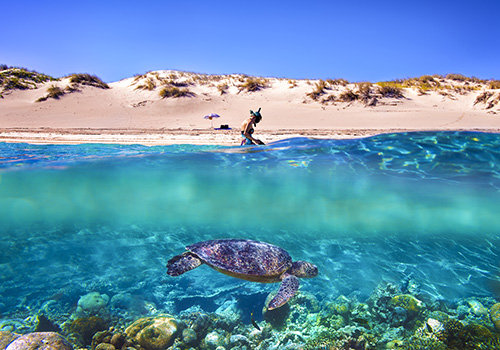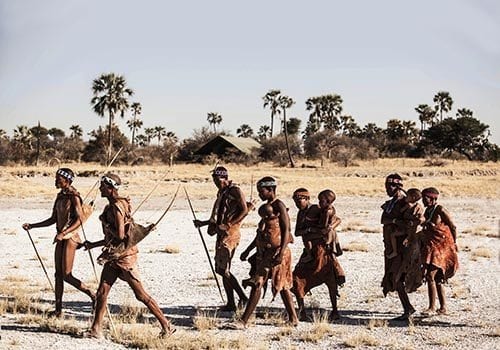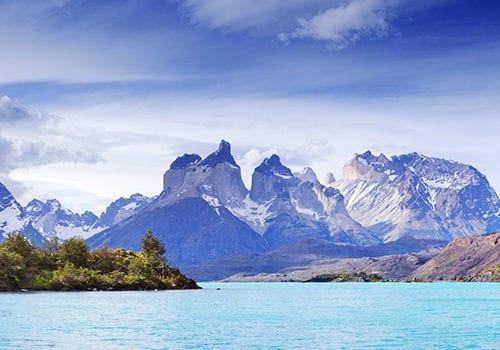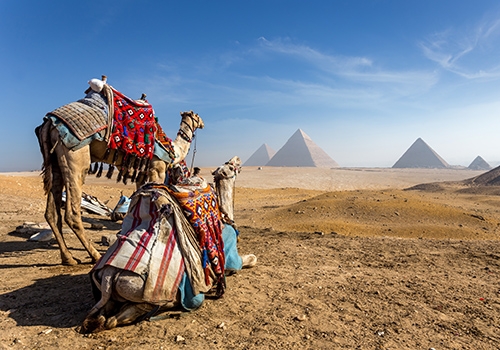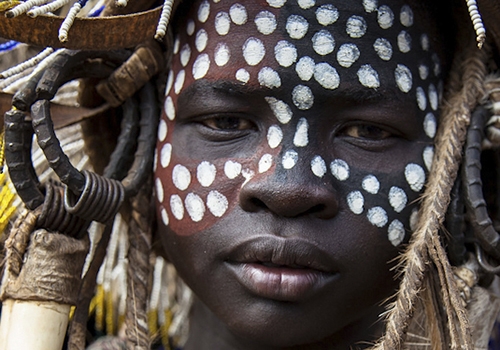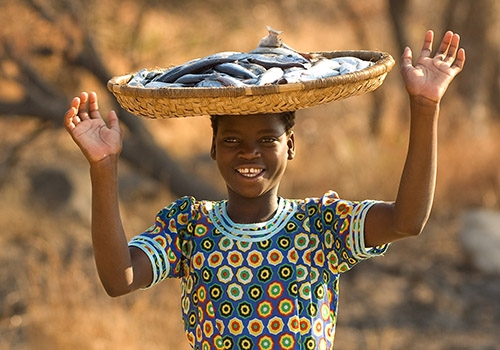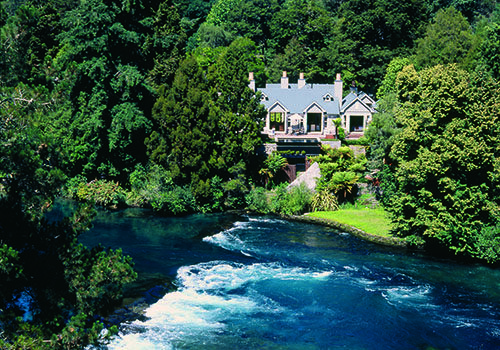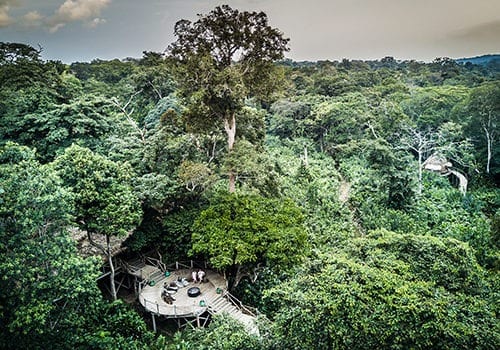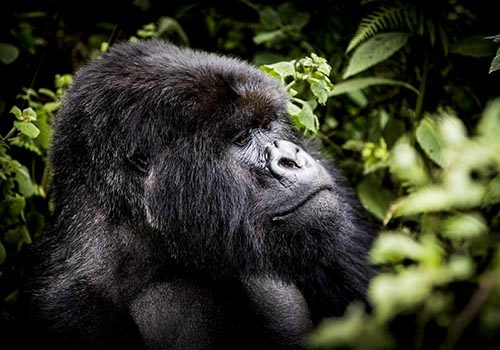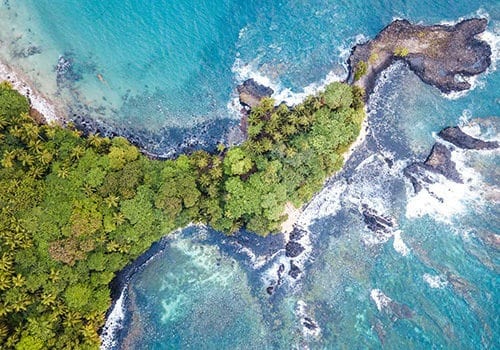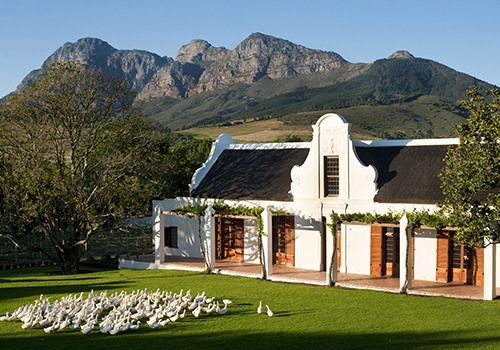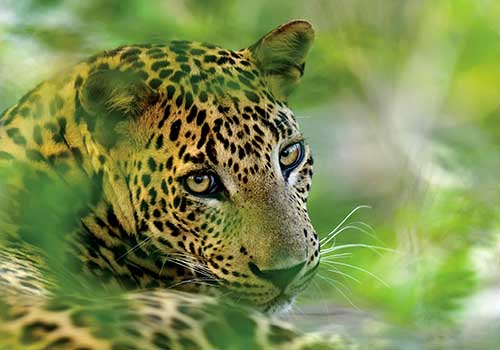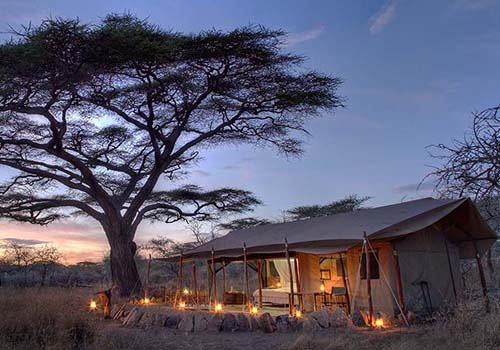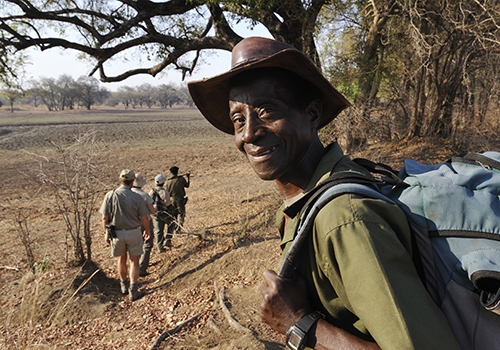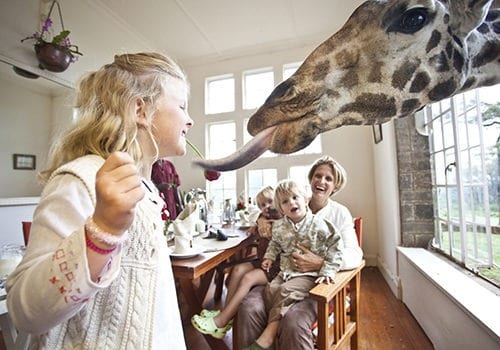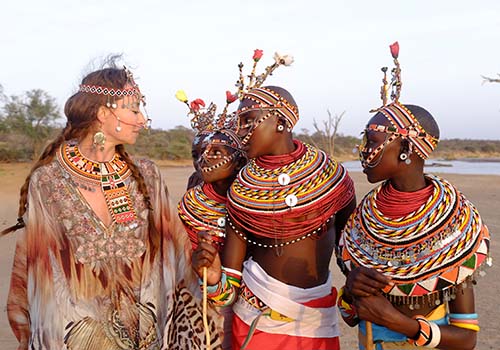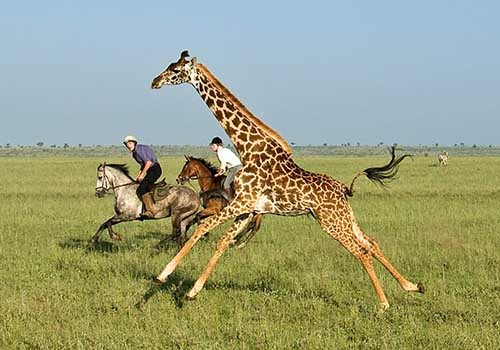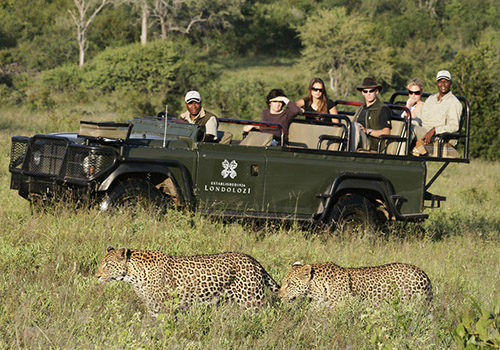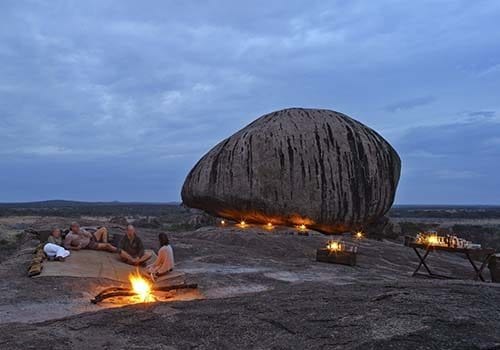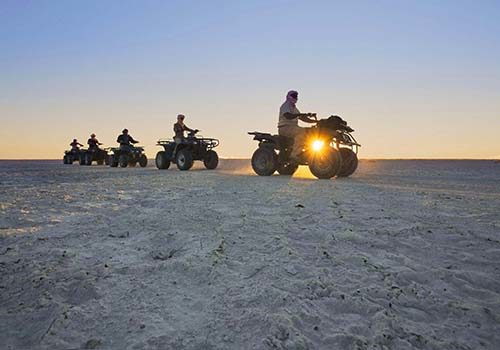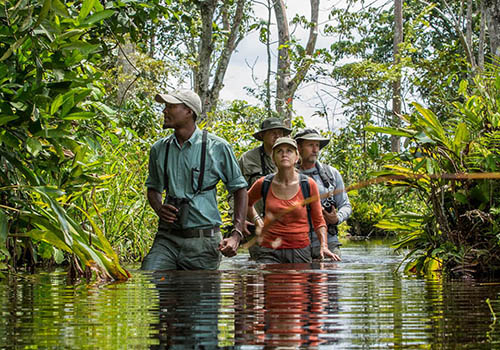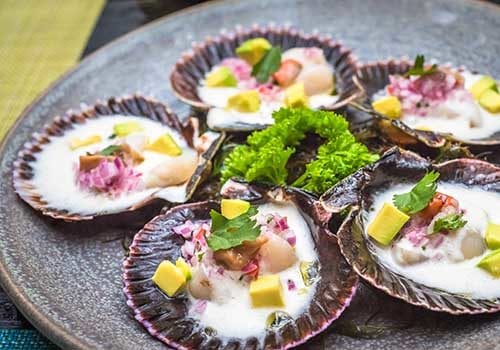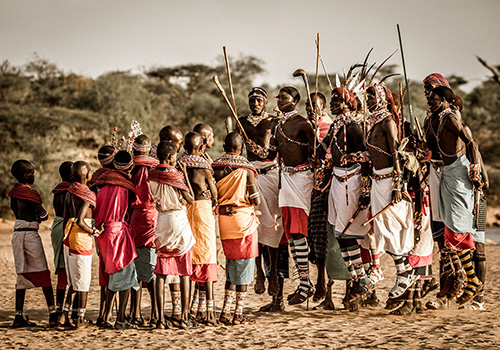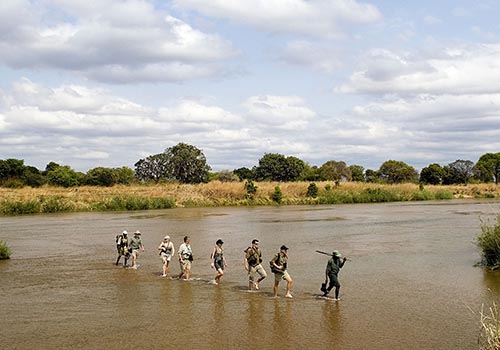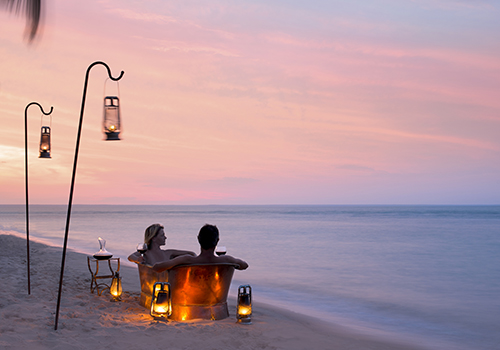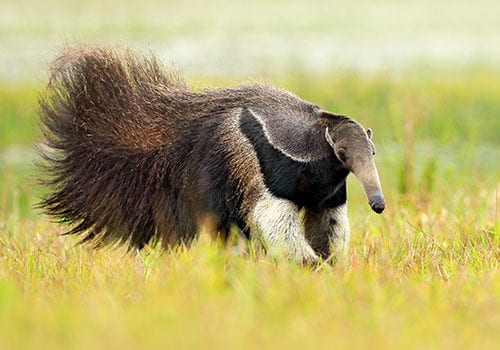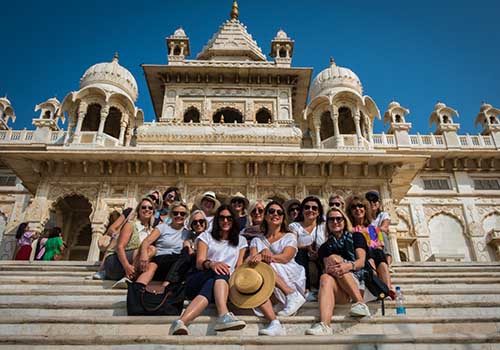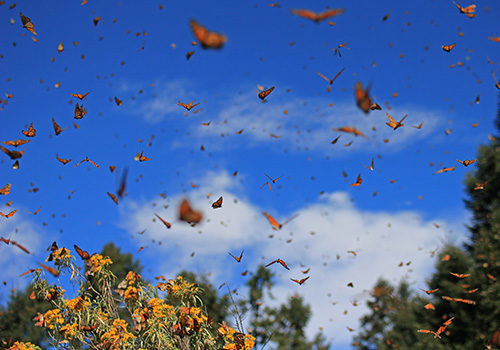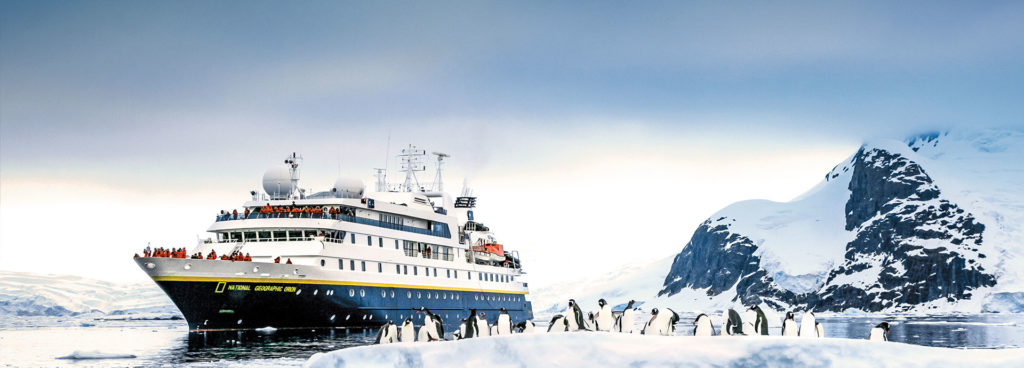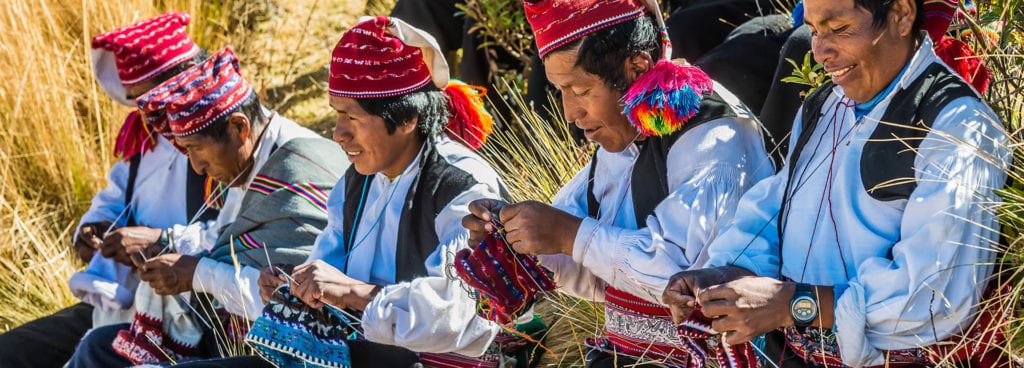DISPATCHES FROM EXOTIC LANDS
Long time friend of The Classic Safari Company Margaret Jones travelled to Brazil from Australia to see jaguars in the wild and went behind the scenes on a very special jaguar safari! She experienced ecotourism at the coal face, witnessing veterinary procedures and assisting with a Hyacinth Macaw conservation project. Here is her story…
A Brazillian Jaguar Safari with Onçafari
Travel to the Pantanal from Australia
Our long-awaited Brazil jaguar safari was dubbed ‘Jaguars Spotted’ by our South America travel specialist at The Classic Safari Company in Sydney. A jaguar safari had been on my bucket list for 23 years, ever since I fell in love with the big cats at Melbourne Zoo when training as a guide. Our plans for a bespoke tour to Brazil had been waylaid by falling in love with Africa on our first safari in 2004 and returning to escort ten small group safaris, and then postponed twice by COVID, but our dream trip to spot jaguars in southern Brazil was finally about to happen!
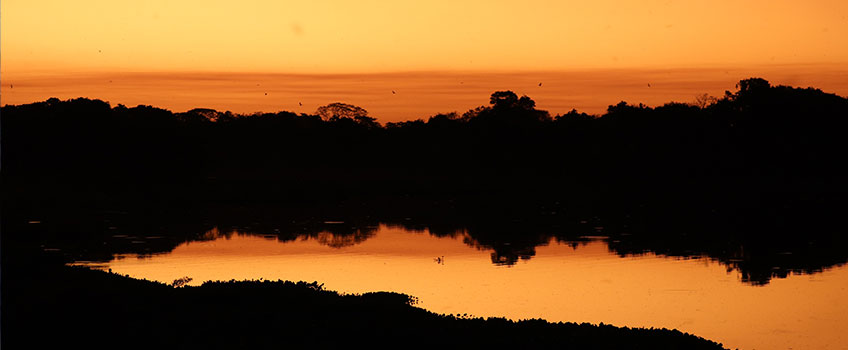
Travelling from Australia to Brazil is an extraordinary shock to the senses and nowhere more so than the Pantanal – the biggest inland delta in the world. Near the northern end of the Transpantaneira, a highway like no other, is Araras Eco Lodge where we had our first taste of this huge and remarkable ecosystem and fascinating culture. We began to absorb its sights and sounds on walks and game drives, and it was on horseback that we spied our first jaguar footprint…
Although the aim of our journey was primarily to see jaguars in the wild, the array of additional wildlife was astounding. There were caiman everywhere, including on the paths at the lodge, plus rheas, capybara, coatis, howler and capuchin monkeys, iguana and foxes, as well as the magnificent Hyacinth Macaw (the world’s largest parrot), water birds, raptors and owls galore.
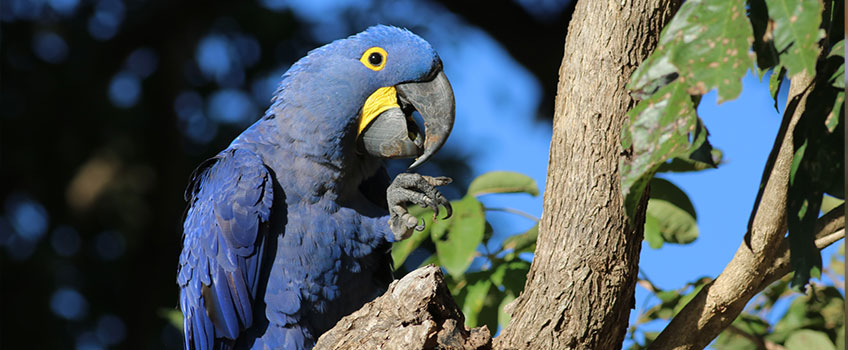
Our second destination, Porto Jofre at the southern end of the Transpantaneira, was the first place we realistically expected to see jaguars. Two days on a boat on the big Cuiabá River and its many channels and lagoons yielded an extraordinary eight individual jaguar sightings! The highlight was a lactating female swimming across the wide river and leaping up the 2-metre bank in a single bound – so fast that my camera-ready husband only caught her bottom half on film!
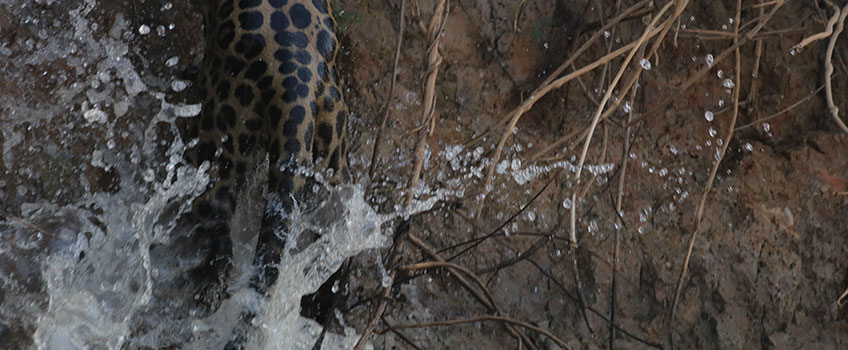
The giant otters were such a treat too, so busy, squirmy, chatty and like torpedoes in the water!
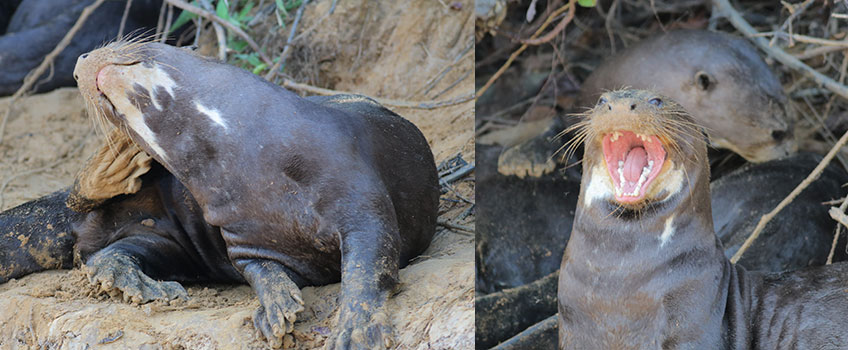
Travelling from the northern Pantanal to the southern part was circuitous and time-consuming, but oh, soooo worth it. Note to self: next time, splash out and book the private charter plane!
Where to stay in the Pantanal – Casa Caiman
Casa Caiman is my idea of paradise. The main lodge of three in the 53,000 hectare Caiman Ecological Refuge, it’s stylishly decorated Brazilian safari style: big and colourful and full of eye-catching prints, sculptures, books, quirky lamps and inviting daybeds and lounges. Ours was a lovely big room with an outdoor sala and everything you could possibly want for four nights.
The safari lodge is set in expansive lush gardens inside a wildlife proof fence since jaguars used to walk through the outdoor lounge! As the first Australians travelling to to Brazil post-Covid, we were welcomed with open arms – and the food was spectacular!
Our first morning game drive yielded the most stunning sighting of female jaguar Nusa with her 5-month old cub on the dirt road in the sun, grooming each other.
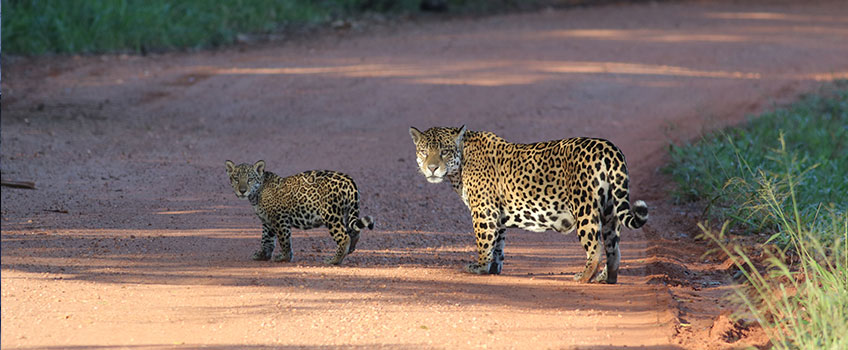
There are just no words to describe this experience. Peccaries abounded, we sighted brocket (deer), and were very lucky to see the very special giant anteater.
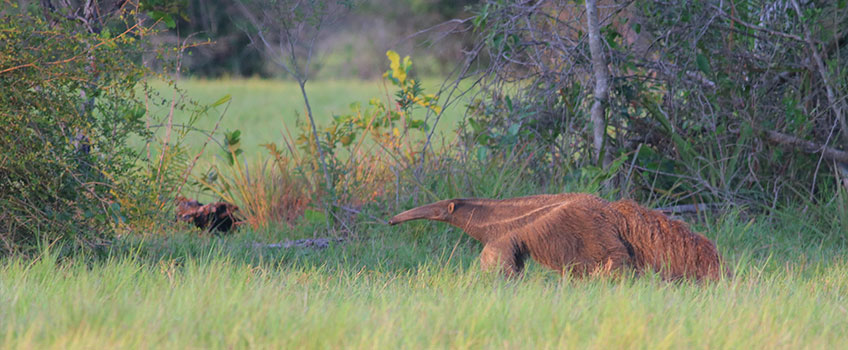
That afternoon was spent with the inspiring researchers working on the Hyacinth Macaw project, assisting them as they abseiled up trees to check nest boxes, and recording sightings of these striking and iconic birds. This might have been a jaguar safari, but we saw so much more besides!
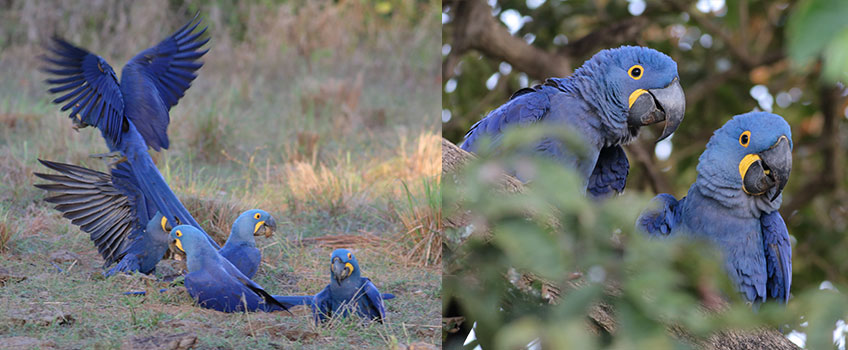
On Jaguar Safari in Brazil with Onçafari
The big day on our Brazil jaguar safari has arrived! It’s 5a.m. – a quick coffee and cake at the bar and then out the door and into our game drive vehicle for the first part of our day with the Onçafari jaguar research team
The taxonomic name of jaguars is Panthera onça, pronounced ‘on-sah’ in Portuguese. Safari means journey in Swahili. We were on Onçafari!
Our first jaguar sighting for the day was Ferinha, a 4 year-old female jaguar with a radio tracking collar – a very special cat indeed! She is the daughter of Fera, one of only two orphaned jaguars rehabilitated and then ‘rewilded’ in the Pantanal. Sisters Fera and Isa lost their mother at a young age and were successfully reintroduced to the wild after learning to hunt in an enclosed area similar to their natural habitat. Seventeen cubs have been born to three jaguars rewilded here… had Onçafari not done this work, those three jaguars would have lived their lives in zoos. Our bespoke tour included seeing the Onçafari rehabilitation facility from a distance: human presence is kept to a minimum for obvious reasons!

We’d hoped to experience an iconic cattle drive on the Transpantaneira highway, so were thrilled to find ourselves in the middle of a one during our morning with Onçafari! The cowboys on their special Pantaneira horses with brightly coloured blankets under the saddles, using palm fronds to guide the herd, was a stirring and colourful sight.

Jaguar Conservation and Eco Tourism in Brazil
After a delicious lunch and lovely siesta back at Casa Caiman, we were treated to a presentation about the Onçafari project. I’ve visited and studied many conservation projects in various parts of the world, and this one is world class. Working in the Pantanal for 11 years, Onçafari has six areas of focus: ecotourism via jaguar safaris (what we were doing), science, education, rewilding, social (in schools and local communities) and forests.
Jaguars are the largest cat species in the Americas and the third largest in the world after tigers (Asia) and lions (Africa). Classified Near Threatened in the IUCN Red List, they are threatened by habitat loss and fragmentation, conflict with local people due to the real or perceived threat posed to livestock, and overhunting of the jaguar’s prey.

Working with local communities is key to wildlife conservation everywhere . When Onçafari began, they conducted research with the Pantanal local communities and discovered that people believed that 30% of stock losses were due to jaguar attacks. The researchers enrolled the cattle ranchers into reporting dead stock so the cause of death could be analysed. These communities now understand that just 1-2% of livestock deaths are actually caused by jaguars, resulting in a significant decrease in jaguar deaths by shooting. Onçafari is also purchasing land to provide habitat and wildlife ‘corridors’ to facilitate natural movement and pairing/breeding of jaguars.
Onçafari’s habituation of jaguars (to vehicles and people on jaguar safaris) have resulted in a significant increase in the percentage of tourists seeing these big cats whilst on safari: 16% in 2103 and 99% in 2021. Successful tourism brings income to the Pantanal and the local communities benefit. I loved the family tree – seeing where jaguars we’d seen on the previous day at Casa Caiman fitted into the local population and Onçafari’s research.

As we were boarding the Onçafari game drive vehicle to head out again, the manager of the project came out to introduce herself. She let us know that they’d called in a vet to attend to Tupã, one of the collared males. He’d been attacked by the unreceptive Fera (aforementioned rewilded female) two weeks before. The Casa Caiman guides and Onçafari researchers were concerned that he was not able to clean his neck/jaw wounds properly because of the collar.
As the sun set, our Onçafari guide located a male and a female jaguar on the edge of a waterhole. Given that jaguars are solitary, we knew we’d found a mating pair! What ensued was unusual – the male Bodalo seemed uninterested and was resisting Aracy’s advances, walking off repeatedly whilst she followed… what a special sighting!
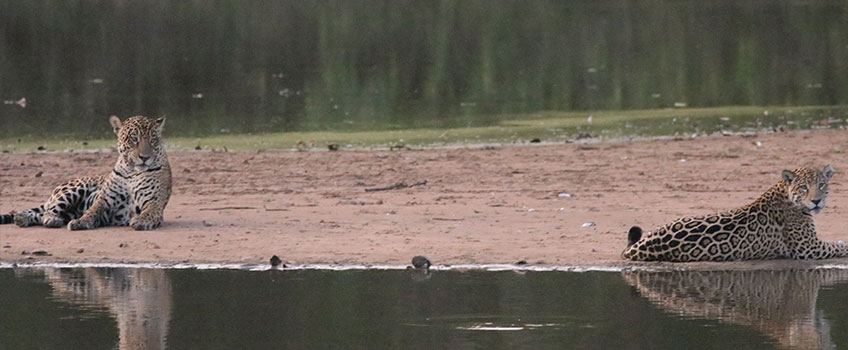
Behind the Scenes on Safari
Imagine our excitement the next morning when our guide and tracker/driver got a call on the two-way radio to invite us to witness Tupã’s veterinary procedure out in the bush! Hang on to your hats… we were now going behind the scenes on a Brazil jaguar safari! We were miles away, and that drive was the fastest we’d ever experienced in a game drive vehicle!
By the time we arrived, the anaesthetic dart had been administered, Tupã’s collar had been cut off, and the wound cleaning was underway. Plastic gloves were available to those of us who wanted to touch his enormous paws, impressive claws, gorgeous tail and beautiful fur. For a lover of wild cats, this was indeed a peak experience! (Gloves are critical so that animals do not wake from anaesthetic with human scent on them.)
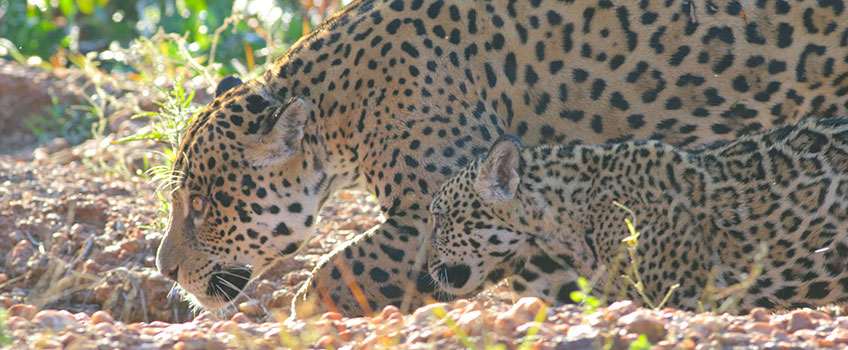
Weighing in around 120kgs, Tupã is 8-9 years old and has been part of the Onçafari research for many years – this was his third radio tracking collar. He has a reputation as a fighter – this was not the first time a vet had been called in for him! The project staff decided not to replace his collar: his genes are well represented in the area and he’s done his bit for jaguar research. His age is showing: Tupã has lost all his small front the teeth in the bottom jaw and most of the small ones at the top front too, and his huge canines are well-worn from use.
The vet explained that they do not use antibiotics in the Pantanal because of the risk of introducing antibiotic resistance into the food chain. He injected anti-inflammatory and anti-worm drugs and drained the wounds by turning Tupã over on to his other side (that took 3 large strong men!).
There was just one more task – the vet took a urine sample. I never imagined that I’d stand next to such a huge and beautiful wild cat watching a vet insert a catheter into its (tiny) penis!
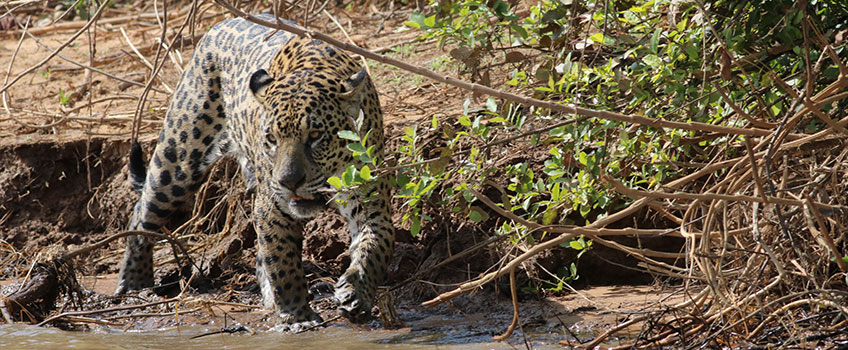
News Back Home
At home 6 weeks later, we were relieved to hear from our jaguar safari guide Murilo that Tupã has appeared lately and is doing fine, the wound is healed, and – he speculated – enjoying his days off without the collar and vehicles tracking him. Murilo added “Just today morning I’ve spotted “Iracelmo”, [a] young male [who is] putting on strength and is a great candidate to overthrow Tupã’s dominance… definitely chapters to follow.”
We saw 7 individual jaguars during our wonderful safari at Casa Caiman, bringing the total to 15 during our 6 days on safari – ‘Jaguars Spotted!’ indeed!
It was so sad leaving Casa Caiman as our Brazillian jaguar safari came to a close, but what a spectacular four days! But I left a bit of my heart there, so a return visit is essential.
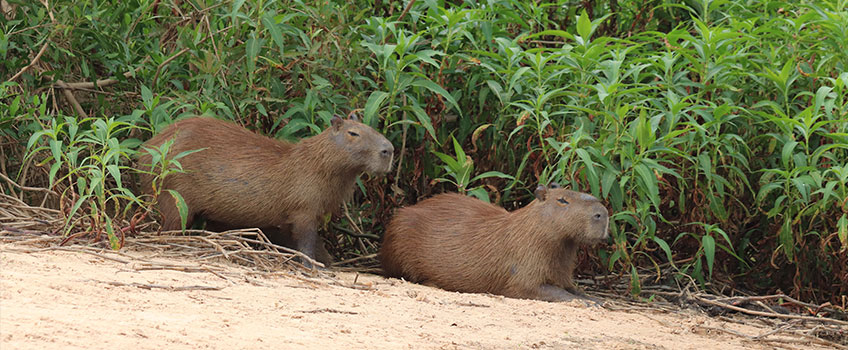

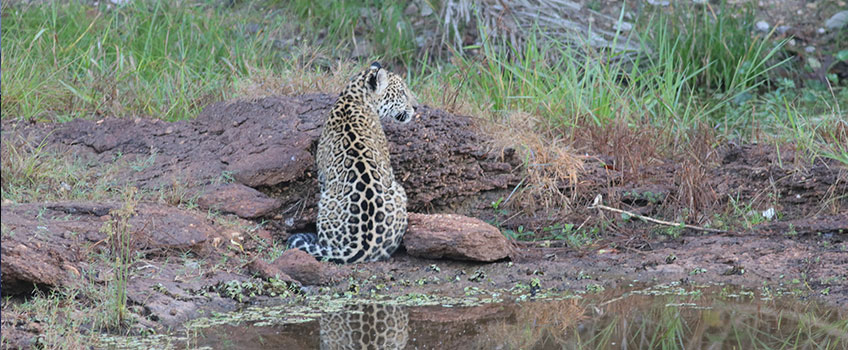
All images and words courtesy of Margaret Jones, with thanks.
If Margie has inspired you to travel to Brazil for a jaguar safari please contact us.

